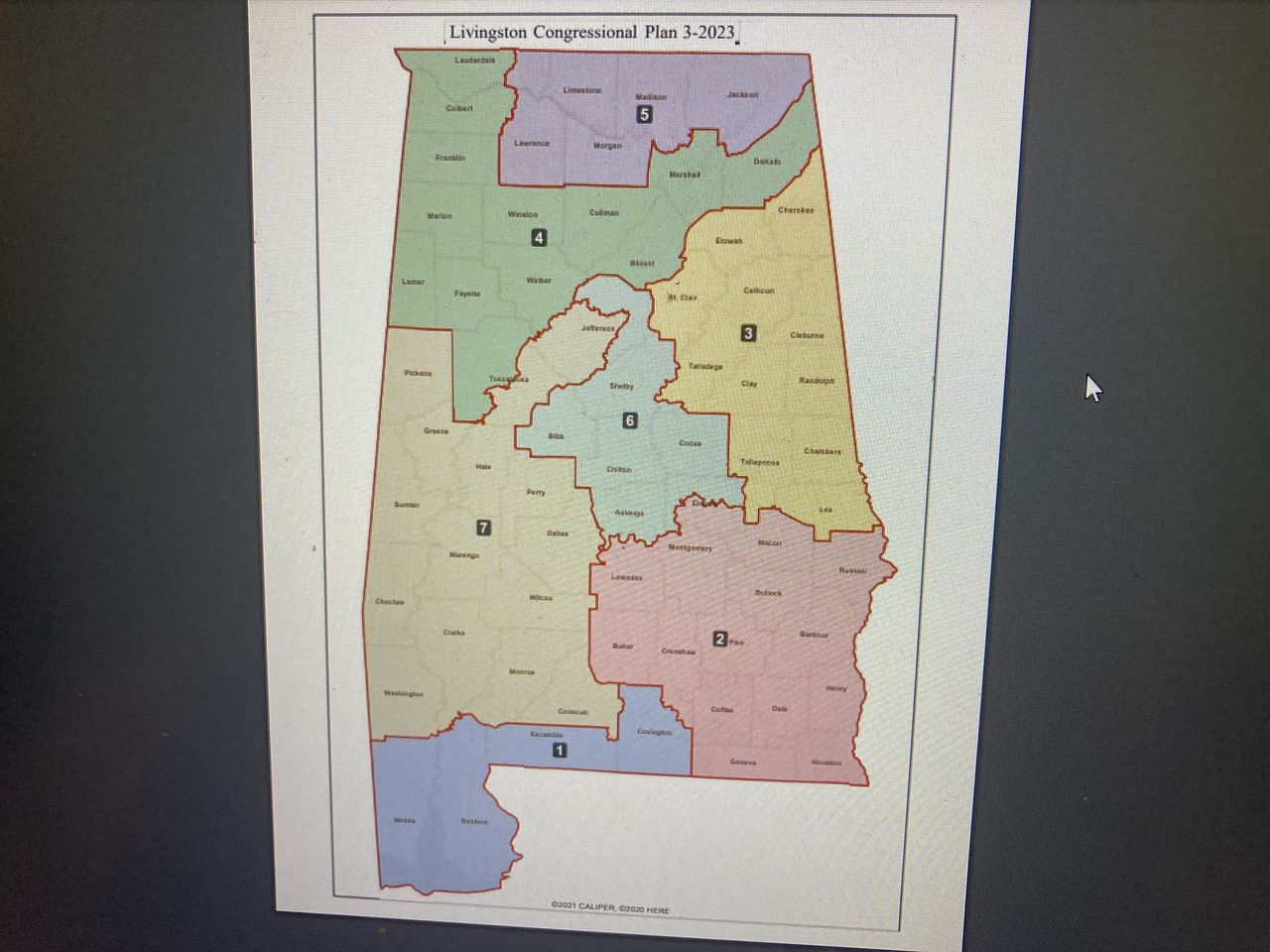Redistricting: Democrats hope court does what GOP lawmakers did not
The Republican majority in the Alabama Legislature approved a new Congressional district map on Friday, the deadline set by a federal court that ruled the old map likely violated the Voting Rights Act.
But Democratic lawmakers, who opposed the plan, said Friday’s vote will not be the last word.
“We’re going to be leaning and depending on the courts to fix this situation just like they’ve done with so many other situations in the past,” Rep. Napoleon Bracy, D-Mobile, said. “Historically Alabama has not been kind to the Black population. From our voting rights, there’s so many things that we’ve had to do to fight for an opportunity to have a seat at the table. And they’re continuing to take that seat away from us.
“So we stand today in support of moving forward, asking the courts to help us, because the Republican Legislature in the state of Alabama could not do the right thing and follow the mandate that was given to them.”
Republicans hold three-fourths of the seats in the State House and approved the map overwhelmingly, 24-6 in the Senate and 75-28 in the House on Friday afternoon. Gov. Kay Ivey signed the legislation into law.
The three-judge federal court has tentatively scheduled a hearing to start Aug. 14 to hear challenges to the plan.
“We have failed the people that sent us down here do their business,” Rep. A.J. McCampbell, D-Livingston, said. “Unfortunately, the federal courts have had to stand and make Alabama do the right thing.
“I called on my fellow colleagues to be fair about this process. But they failed to do it. If nothing else, this vote is a defiant vote. It’s one that dehumanizes a people. It dehumanizes a people that have struggled just to have the opportunity to say that they really exist in the state of Alabama as Americans.”
In June, the U.S. Supreme Court affirmed a three-judge district court ruling that Alabama’s current map likely violates the Voting Rights Act by diluting the Black vote.
Only one of the state’s seven Congressional districts has a majority Black population, even though one-fourth of Alabama residents are Black. The three-judge district court, including two President Trump appointees, noted that the Voting Rights Act does not guarantee Black citizens representation in proportion to their share of the population.
But the court also said there were other factors to consider, including a finding that the Black population in Alabama was large enough and geographically compact enough for a reasonably configured second majority Black district. The fact that voting is racially polarized in Alabama also contributed to the finding that the map likely violated Section 2 the Voting Rights Act.
The court said that to fix the violation, Alabama needed a second majority Black district “or something quite close to it,” a district where Black voters would have an opportunity to elect a candidate of their choice.
The map approved by the conference committee Friday would leave District 7 as the lone majority Black district, barely, at 51% in Black voting age population, down from 56% on the current map. It would increase the Black voting age population in District 2, which covers southeast Alabama, from 30% to 40%.
A new congressional map approved Friday by the Alabama Legislature. The U.S. Supreme Court ruled in June that Alabama’s old map likely violates the Voting Rights Act. (Mike Cason/[email protected])
House Speaker Nathaniel Ledbetter, R-Rainsville, said after the map passed Friday that he believes it makes enough changes to survive a court challenge.
“If you think about where we were, the Supreme Court ruling was 5-4,” Ledbetter said. “So there’s just one judge that needed to see something different. And I think what we’ve done with the compromise today, there’s a good shot.”
Some Democratic lawmakers said they thought the real intent of the Republicans’ map was to generate another court case that could lead to a ruling that weakens the Voting Rights Act. Ledbetter said a return to the Supreme Court was not his goal.
“It’s not my strategy,” Ledbetter said. “My strategy is for the lower court to approve what we’ve done. And I think we showed significant movement in what we had.”
Asked how the 40% Black voting age population in District 2 would comply with the court’s guidance that a remedy for the Voting Rights Act violation was a second majority Black district “or something quite close to it,” Ledbetter said he was not sure that was the message from the court’s ruling.
“It talked about an opportunity district is what it talked about,” Ledbetter said. “And I think it certainly does that.”
The National Redistricting Foundation, an affiliate of the National Democratic Redistricting Committee, released a statement by former U.S. Attorney General Eric Holder denouncing the new Alabama map.
“This is a continuation of Alabama’s fraught history with racial inequity, a history filled with Black Alabamians’ struggle for equal rights,” Holder said. “It is one where, at every turn, the federal courts have had to intervene on behalf of Black Alabamians in order to achieve the fair representation and equality they deserve as citizens of this nation. What is happening in Alabama underscores the absolute necessity of enforcing the legal protections in the Voting Rights Act.”
But Gov. Ivey took the opposite view, praising the Legislature for completing the task of redrawing its map.
“Following the U.S. Supreme Court order, I called the Alabama Legislature into a special session to readdress our congressional map,” Ivey said. “The Legislature knows our state, our people and our districts better than the federal courts or activist groups, and I am pleased that they answered the call, remained focused and produced new districts ahead of the court deadline.”
